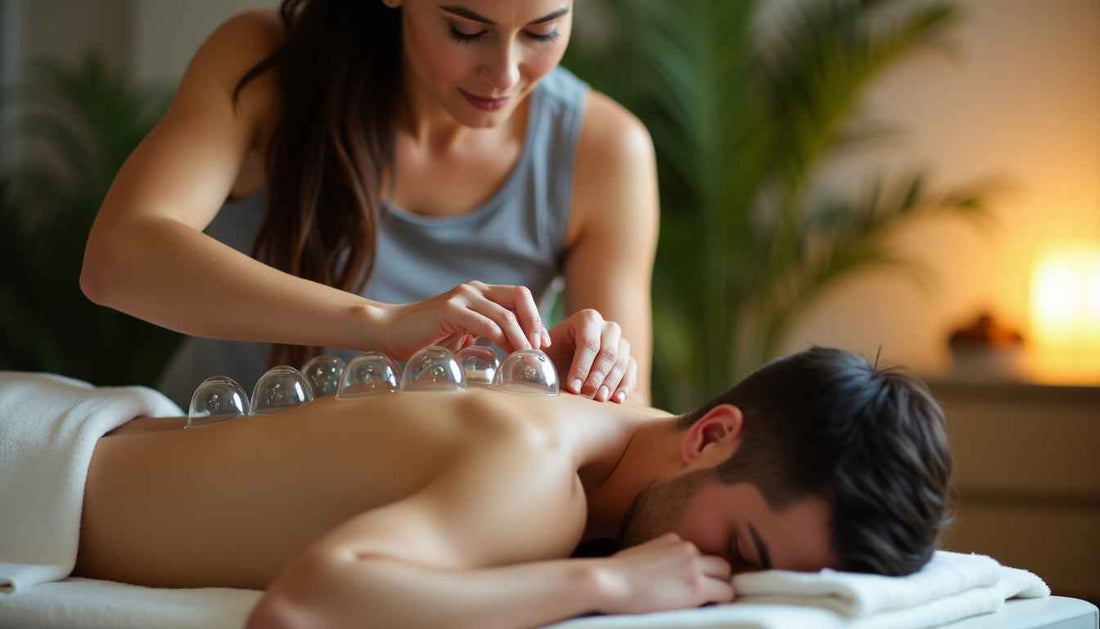
The Most Powerful Cupping Pressure Points You Need to Know
Share
Targeting the right cupping pressure points can make all the difference in your therapy results—whether you're looking for relief from chronic pain, anxiety, headaches, or poor circulation. Cupping therapy becomes significantly more effective when specific pressure points are stimulated, as each point corresponds to energy pathways and organ systems in traditional Chinese medicine. In this article, we’ll explain the top cupping pressure points, what they do, and how they’re used by professionals for healing and balance.
What Are Cupping Pressure Points?
Cupping pressure points are specific areas on the body where suction cups are placed to stimulate energy flow (Qi), blood circulation, and lymphatic drainage. Many of these points align with meridians in Traditional Chinese Medicine (TCM) and are also used in acupuncture and acupressure.
Why Pressure Points Matter in Cupping
Precise cupping = targeted results. By placing cups on strategic pressure points, you can:
- Reduce pain and inflammation
- Improve organ function
- Promote emotional and hormonal balance
- Support digestion and respiratory health
🡒 Related reading: Cupping Therapy Explained
Top 10 Cupping Pressure Points (With Locations and Benefits)
1. BL13 (Feishu) – Lung Support
- Location: 1.5 cun lateral to the third thoracic vertebra (T3)
- Use For: Asthma, cough, respiratory support
- Why It Works: Stimulates the lung meridian to clear stagnation and boost breathing
2. BL18 (Ganshu) – Liver Detox
- Location: T9 level, 1.5 cun lateral to spine
- Use For: Detoxification, mood swings, hormonal balance
- Common In: Liver Qi stagnation, PMS, fatigue
3. BL23 (Shenshu) – Kidney Vitality
- Location: L2 vertebra, 1.5 cun lateral to spine
- Use For: Lower back pain, adrenal fatigue, hormonal balance
- Bonus: Often used in Cupping for Anxiety
4. DU14 (Dazhui) – Immune Boost
- Location: Below C7 vertebra at base of neck
- Use For: Fever, immunity, neck and upper back pain
- How to Cup: Apply with medium pressure; can combine with herbal oil
5. GB21 (Jianjing) – Neck & Shoulder Tension
- Location: Midway between the neck base and shoulder tip
- Use For: Stress, muscle tension, headaches
- Important Note: Not safe during pregnancy
🡒 Deep dive: Cupping Therapy for Migraines
6. LI4 (Hegu) – Headache Relief
- Location: Between thumb and index finger
- Use For: Headaches, stress, facial pain
- Cupping Method: Rarely cupped directly, but often stimulated alongside back cupping
7. ST36 (Zusanli) – Energy & Digestion
- Location: 4 fingers below kneecap, one finger lateral to shinbone
- Use For: Boosting energy, immunity, digestive issues
- Therapy Tip: Sliding cups along legs often include this point
8. SP6 (Sanyinjiao) – Women’s Health
- Location: 4 fingers above the inner ankle bone
- Use For: Menstrual pain, hormonal balance, fertility support
- Note: Avoid during pregnancy unless advised by a professional
🡒 Learn more: Cupping Therapy for Fertility
9. BL40 (Weizhong) – Lower Back & Leg Pain
- Location: Midpoint behind the knee crease
- Use For: Sciatica, back pain, leg tightness
- Application: Often used in sports cupping sessions
10. DU20 (Baihui) – Mental Clarity & Calm
- Location: Top of the head at the midline
- Use For: Anxiety, brain fog, energy balance
- Stimulation: Usually massaged or indirectly cupped with head therapies
Featured Snippet Optimization
What are the main cupping pressure points?
Key cupping pressure points include BL13 (lungs), BL23 (kidneys), GB21 (shoulders), ST36 (digestion), and DU14 (immune system). Each point targets specific health concerns and enhances cupping results when used correctly.
How to Choose the Right Pressure Points
The selection depends on your symptoms:
| Symptom | Recommended Pressure Points |
|---|---|
| Headaches | GB21, LI4, DU20 |
| Stress/Anxiety | DU20, BL23, SP6 |
| Back Pain | BL23, BL40, DU14 |
| Digestion | ST36, SP6 |
| Immune Boost | DU14, BL13 |
How to Apply Cupping on Pressure Points
Step-by-Step:
- Identify the pressure point using a meridian chart.
- Apply oil to the area to reduce friction.
- Place the cup directly over the point with desired suction.
- Leave for 5–15 minutes, depending on the condition.
- Cleanse the skin and hydrate post-treatment.
🡒 For various techniques: Cupping Therapy Techniques
Safety Guidelines
- Always work with a trained therapist
- Avoid cupping over open wounds or varicose veins
- Do not cup sensitive or thin-skinned areas (e.g., face) without proper technique
- Pregnant individuals should avoid abdominal and GB21 points
FAQs (People Also Ask)
Where are the main pressure points for cupping?
The main cupping pressure points are located along the back, neck, shoulders, and legs. These include BL13, BL23, GB21, and ST36, which align with TCM meridians.
Can cupping be done on acupuncture points?
Yes, many cupping points overlap with acupuncture points to stimulate energy pathways and healing.
How long should cups stay on pressure points?
Cups are typically left for 5 to 15 minutes depending on the area and therapy goal.
Is cupping on pressure points painful?
Cupping is generally not painful but may cause a tight or warm sensation. Bruising is common but temporary.
Conclusion
When it comes to healing with cupping, knowing where to place the cups is just as important as how they’re used. Using specific cupping pressure points allows you to harness the full power of this ancient technique, offering targeted relief and better outcomes for pain, stress, and more. Whether you're a practitioner or a curious patient, mapping out these pressure zones is your gateway to more effective therapy.
CTA: Download the Free Cupping Pressure Points Chart
Ready to apply what you've learned? Download our FREE Cupping Pressure Point Chart, featuring full-body maps and therapy guides for each major pressure point. Ideal for home use or clinical practice.
